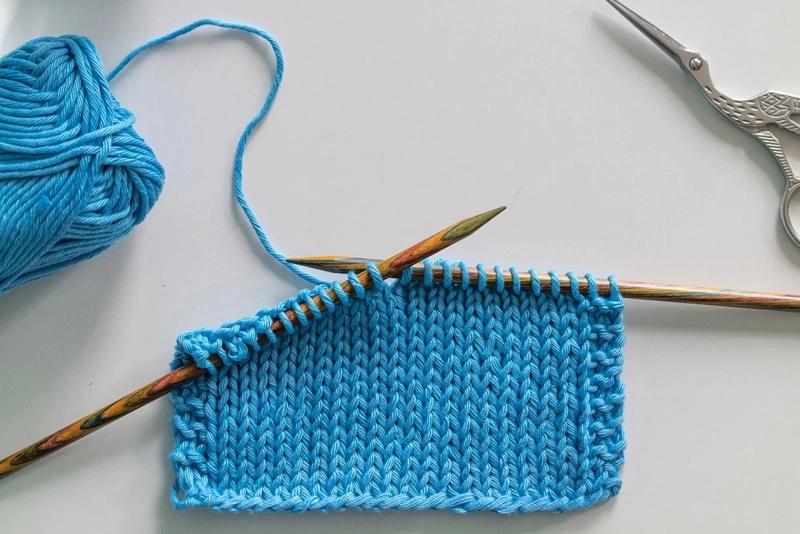Even if every beginning is difficult, don't be discouraged because everyone can knit. In this short blog you will learn the first basics and the most important techniques such as stockinette stitch or knit and purl and the stitch cast-on.
The first steps
First you should think about which yarn and which knitting needles you want to use for your very first knitting project. We can of course recommend our Knitpro Knitting Needles for this, they are particularly beginner-friendly. Take the working thread and lead it from the back of your hand between your little and ring finger to the palm of your hand. Then back between your index and middle fingers on your back. Wrap the yarn around your index finger once or twice. Then you lead the thread forward and clockwise once around your thumb. Hold the thread with your middle, ring and little finger. Poke the needles into the loop that has formed around the thumb from below. Get the thread from your index finger. Pull the thread through the thumb loop. This is how your first stitch is made.
Knit and purl stitches
Knit and purl stitches are the basic building blocks of all knitting. This basic knitting style is part of every knitting pattern - whether it is a structural pattern or lace pattern, cable pattern or brioche pattern. It is therefore important for every beginner to master these stitches after the stitch cast-on. The right stitch is one of the simplest stitches in knitting. To do this, proceed as follows: Place the thread behind the needle, poke the right needle from left to right through the first stitch on the left needle. Then pull the thread through the loop and slip the stitch off the left needle.
The counterpart to the knit stitches are the left stitches and you knit them as follows: you place the thread in front of the needle, poke the right needle from right to left through the first stitch on the left needle. Then pull the thread through the loop and slip the stitch off the left needle.
You can now keep knitting according to this principle – alternating one row on the right and one row on the left. This is how stockinette stitch works – it’s really quite simple!
The knitting gauge
This is a great way for you to get started with the newly learned technique. Even if it is sometimes annoying and tedious to make a gauge, you should never skip this step, because ultimately your knitted piece should fit in the end. Small variations can make big differences throughout the knit. Before you start a sweater or any other knitting project, you should therefore make a gauge of at least 10 cm square to compare it with the gauge given in your pattern.
Cast off stitches
Your knitting project is taking shape row by row and you're beginning to wonder how you can knit a nice finish. No problem! With the so-called "cast off stitches" you intertwine the stitches step by step and thus ensure a pretty end. Here's how it works: Once you have reached the end of your knitting project, turn it again and knit the first two stitches as before. Then pierce the 1st stitch with the left needle, place it over the 2nd stitch and pull the 2nd stitch through the 1st stitch with the right needle.
Then knit the next stitch and pass the previous stitch over it as described in step 1. Repeat this process until all stitches have been cast off. Finally, simply cut the thread and pull it through the last stitch.
"Always walk through life as if you have something new to learn and you will." — Vernon Howard
With our Knitpro Knitting Needles you can perfectly start your new hobby and experience a great knitting experience right from the start. Take a look at our range and find your very first favorite knitting needles
Do You Like this Knitpro Blog? Click here for more Knitpro Blogs like this.


